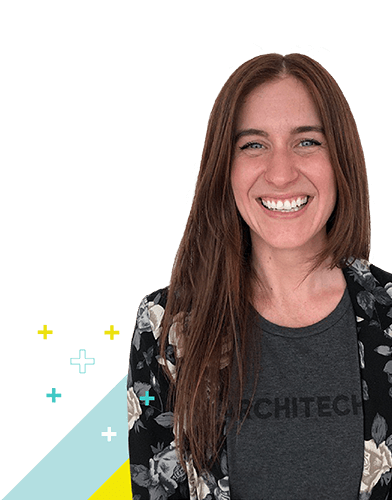
In this blog, we’re exploring transferable skills that can be leveraged in the design strategy process to streamline the research process and strengthen client work.
The relationship between design and anthropology is clear.
As designers, we spend a lot of time coming up with solutions that will move people to action. Good design consists not only of a seamless experience, but it also discreetly encourages specific behaviour in the user. In order to do this effectively, I tend to rely on my creative and anthropological skill sets as a package to better understand and engage the target audience.
In very simple terms, anthropology is the observation of people in their natural habitat with as little intrusion as possible.
These observations, collected over months of fieldwork and research are compiled into an ethnography – an in-depth description of the everyday customs and practices of the people you have been observing.
The ethnography has to follow a simple set of rules and ethical considerations in order to achieve the most unbiased, clear results. These rules can be easily applied to user research; in fact, you might already be doing so.
Let’s dive in.
UX Research: The Rules of Engagement
Introduce your biases: We each approach a situation with our own set of experiences.
An ethnographer (or strategist and designer) should be able to consider and state his or her biases and familiarity with the topic in order to understand how their particular lens might impact the study (or project).
When it comes to user research, your biases are mostly a good thing.
Biases provide a familiarity with, and an understanding of, the user group that helps you relate to them and propel the project forward. On rare occasions, your bias might negatively impact the task.
In this case, it should be stated immediately. Extreme lack of interest in the subject matter, for example, is a negative bias.
Define core questions and goals: What are you trying to learn and achieve? What are the probing questions that could help you move towards achieving the larger goal?
For example, if your goal is to build the Best Clock Ever app, your questions should not only consist of asking people what kind of clock they like or what other clocks they use.
Your research should look at how they set their alarms, how they wake up, and how many times they hit snooze. Do people want to wake up to a certain song and if so how loud should it be? You can keep going deeper with considerations like where people put the said clock, how they reach it, and if there are other people sharing the bed with them.
Examine your assumptions: What are the existing assumptions made about the user group you are studying? What are your client’s assumptions about the project needs and the users?
During fieldwork, your task is to validate or discredit the set assumptions. What typically happens is you discover things between the lines – ideas that were lost due to assumptions, because they didn’t fit, or were unknown.
Let’s look at a couple assumptions about the user group for The Best Clock Ever:
- The app needs to be mobile-first
- An average person snoozes 3 times
- Alarms must be loud to be effective
Based on these assumptions, the app might be built to fit a list of needs that have not been validated. What if you learned that people don’t like to use their mobile alarm clock because it drains their battery? Or, that an average person snoozes twice but has multiple alarms set?
You might also learn that people who sleep with a partner set their alarms more quietly and put the device under the bed while single people sleep with their phones under their pillow, using the loudest setting possible to make sure they hear it.
The learning possibilities are limitless and exhilarating!
Get a clear picture of how to improve your user interface with a professional UX assessment.
[ld_button title="Learn More" link="url:%2Fui-ux-consulting%2F|||" color="#3fc8c4" text_color="rgb(0, 0, 0)" el_class="arch-btn"]
Begin Your UX Research Process with Secondary Research
Secondary research is the information that already exists like industry articles, research documents, statistics, and so on.
It also includes your industry and user background, the kind of information you can use to develop a list of known qualities about their needs and build questions and research parameters around.
Whenever we begin working on a new project, the Architech Experience Design team (often joined by our product and engineering team - “design is a team sport”) dives into online resources and client-provided information to understand the project and user needs.
Perform the Necessary Fieldwork
This is an essential portion of the ethnography.
During this time, the UX researcher embeds themselves into the target society with the goal of learning through observation and participation. During this phase, the most important things to do are listen, watch, and inquire (without asking leading questions).
For example, one of our teams working on a large industrial project spent time on-site interviewing and observing employees and machine operators.
What they learned through observation, among other things, is:
- The app is often used outdoors.
- Insight: Mobile-first is required.
- The app is frequently used in bad weather and late in the day.
- Insight: Design must account for inclement weather and for various lighting conditions.
- Employees and machine operators are typically stocky men with heavyset hands.
- Insight: Action buttons need to be large for better accessibility.
Each insight gathered on-site significantly improved the quality of the application we were building.
Conduct Valuable Interviews
These can be formal and informal.
Informal interviews: probing conversations – frequently taking place naturally during fieldwork.
Formal interviews: set up in a controlled environment and moderated by an experienced interviewer.
The same industrial project mentioned above leveraged both formal and informal interviews – ranging from one-on-one to group discussions and white-board sessions.
A lot of valuable insight was gathered during these sessions. For example, we learned that a number of pages from the original website were no longer required while a number of other ones could be combined.
While I understand it’s unlikely that you’ll be able to spend months on site with your client’s team, what you can do is be observant in the limited time you do have.
The key is to look closely, look further, pay attention, and try to understand people’s habits, behaviours, and the reasoning behind their actions and choices.
Learn More:
- Don’t Let Page Speed Cost You Conversions
- Responsive & Adaptive: A Blended Approach
- Data & Design: A Match Made in Heaven
Conclusion
At the core of agile methodology is putting people before process — this is also the driving force behind the human-centred design.
While most of the heavy work on user research is completed upfront, it never actually stops. As you go through your design sprints, continuously looking to validate concepts, pages, actions and so on, the user research evolves into user testing.
Without upfront user research, we couldn’t gain access to the insight required to build useful tools, intuitive apps, or design desirable, seamless experiences for people to enjoy and relate to.
The insights you gain from user research may surprise, disappoint, or alarm you — but, armed with all of this information, you’ll be ready to hit the ground running as you plan, conceptualize, and build your own version of the Best Clock Ever.
Ready to integrate user research to drive results? Contact us to find out more about how we can help you achieve your business objectives.






























